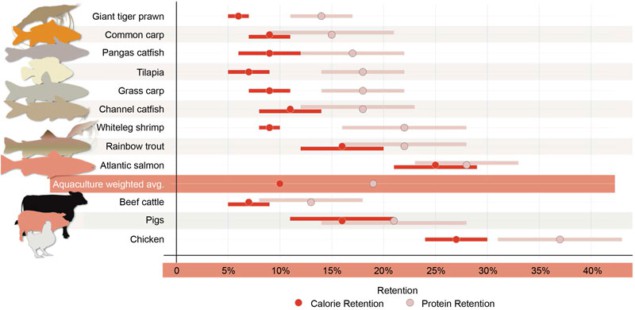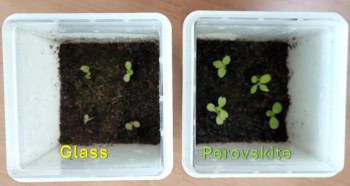
As the world’s population grows so does the amount of food required to feed it. But what’s the most efficient way to produce that food? Weight-based feed conversion ratios – the amount of feed administered over the lifetime of an animal divided by weight gained – show that beef is more resource intensive to produce than chicken, but this approach may be missing important details, as researchers in the US have now shown.
New results generated by scientists from Johns Hopkins University together with a colleague at Stanford University indicate that the meat production efficiency of some species of fish can be compared to pigs or even cattle. Only farmed Atlantic salmon was found to be on a par with chicken, one of the most efficient to produce forms of animal protein.
The study, published in Environmental Research Letters (ERL), looks at how feed conversion results change when additional factors such as the edible portion of the animal and the nutritional density of the feed are taken into account.
Aquaculture – or farmed seafood – is a fast-growing sector and viewed by many as a promising route to satisfying increased global demand for meat. Seafood has lower weight-based feed conversion figures compared with terrestrial animals, suggesting greater production efficiency. Water plays a role as buoyancy allows fish to expend less energy in moving and staying upright.
But what happens when the analysis is expanded to rank species by protein retention and calorie retention? In other words, the ratio of protein (or calories) in the edible portion of the animal divided by the amount of protein (or calories) in the feed.
The nine species – giant tiger prawn, whiteleg shrimp, common carp, grass carp, pangas catfish, channel catfish, tilapia, rainbow trout and Atlantic salmon – considered in the study represent over half of the global production of fed aquaculture. For land animals, the team focused on the top three livestock groups produced for meat worldwide – chicken, pigs and beef cattle.
It took time for the scientists to track down all the data they needed to calculate protein and calorie retention for all 12 species, but their search was worthwhile. Feeding the information into the equations showed that chicken performed best for both protein and calorie retention, followed by Atlantic salmon.
“A major takeaway from our work is the importance of using multiple measures when determining the efficiency of animal production,” said Jillian Fry from the Johns Hopkins Center for a Livable Future. “I consider the results of this study to be most relevant for NGOs, academics, and other stakeholders focused on creating sustainable, resilient food systems.”



